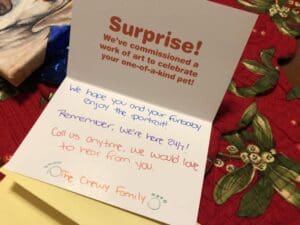SEO, short for Search Engine Optimization, is the practice of curating website content to achieve top rankings in Google, among others.
In the past, SEO stuffing keywords into every possible location—something we used to call the “SEO Top 5.” These include the HTML Title, Meta Description, Headings, Body Copy and Anchor text.
Google’s own documentation suggests—and even states directly—that most of these have little impact on rankings.
But is SEO really dead?
Search engines have one goal—to provide the best, most relevant results for a given keyword search. As a website owner, your goal should be to provide that best, most relevant web page. The trick is to understand how search engines make the choice.
You should always include an HTML page title and meta description, because these are usually visible in the search results. And, yes, you should use your target keyword here as well. But, write them to be helpful to humans. That way, you’ll increase traffic and help search engines learn what your website’s about at the same time.
The same is true for page content. Write your website content to be useful and engaging to visitors to your website. Use keywords appropriately, but don’t overuse them in an attempt to boost rankings. Keyword stuffing doesn’t work and may even hurt your rankings.
To get you started, here are a few things every website owner should do;
But, there are hundreds, if not thousands of signals search engines use to decide which websites are worthy of those coveted top spots.
 Who is Gary Vaynerchuk?
Who is Gary Vaynerchuk?Starting as a born entrepreneur, Gary Vaynerchuk has been a part of many businesses throughout his career. He started as most kids do selling lemonade and then brought his business skills to the schoolyard. Through his high school career, he managed to sell tens of thousands worth of baseball cards. If you are suddenly thinking you spent your high school days wrong, you’re not the only one! Finally, as he moves from high school business, he starts to build his father’s local wine business into an electronic empire. With this expansion of the business, he decided to expand in the video industry and did a long series on youtube, the WineLibraryTV. As he spoke more he became more well known. He moved up in his career, focusing his books on media, communication, and marketing. Obviously what he was doing was working, he started another business with his younger brother. Making VaynerMedia a flourishing business today with over 800 employees. Not only is Mr. Vaynerchuk an exceptional businessman, but he also is known for his writing and public speaking skills. He has written 5 best selling books about business and can give valuable advice on the internet marketing industry. 
When you find the right platform/platforms to start internet marketing, you also have to provide the right content. Make sure it fits the platform and gets the message you want to send across. Giving the right content will have your target market interacting more frequently with your business.
Knowing your market goes across all business criteria. However, you have to know your target demographic when marketing online. You should know which social media platform they are spending most of their time on. This way you can create the perfect stories that match this platform.
No matter which platform you are using, you should give quality information and content to your viewers. Give them what they are asking for because they will want to spend time interacting with your site. Once they feel comfortable with your brand and company this is when it is acceptable to ask for their business. Know since you are giving your customers a lot, there is no need to feel guilty about asking for customers.
To learn more about internet marketing techniques, read about other internet marketing experts that OCG Creative has provided.
You can have the best product ever - even better than existing competition - but if no one knows about it because you didn’t market it correctly, it might as well not even exist.
Amy Landino is an award-winning YouTube creator, best-selling author, and international public speaker. Her enthusiastic and transformative content has changed the ways marketers are tackling vlogging and video. Landino has also been traveling as a professional keynote speaker to share her insights with new markets. She has an innovative approach to leverage digital attention to drive traffic.
Video + blogging = vlogging! Video marketing has become a very popular trend in the marketing field within the last few years. As a way to convert more leads to sales, companies are deciding to invest in video to increase their reach. Not only does she work with vlogs, but Landino is also a best selling author of the book, Vlog Like a Boss. However, she dives into the idea that vlogs can create so much more than just a video but a brand. With research and real-life examples, Landino confirms her insight. A company can be successful if they kill it online and invest in the right resources. Her book is perfect for go-getters and creators of internet marketing, whose goal is to communicate in an innovative way.
There are many key takeaways from Landino’s book that can transform your video marketing tactics from a fixer-upper to can’t-stop-watching content. One tactic she writes about is narrowing the market and finding a niche for your vlogs. Specialization is very important. It will help you reach more people in less time. In addition, planning your content out prior and creating a schedule can work wonders. Most importantly, Landino emphasizes that you can not let your fears of video stand in your way of creating amazing content in your industry. Check out how to start making and editing videos below!
#VlogLikeABoss with Amy Landino. Be sure to check out her website, Twitter, and Youtube. If you would like to learn other internet marketing tips, read up on other top internet marketers.

 Who is Jeff Bullas?
Who is Jeff Bullas?The rise of social media was a "game changer" says top marketing influencer, Jeff Bullas. The introduction of social networks did much more than make it easier for people to connect, it skyrocketed online marketing. Bullas saw the potential for social media marketing back in 2008, ancient times in terms of Twitter, Facebook, and platforms alike. It came to him after he had noticed the opportunities the platforms had given him in his personal life. Bullas began his own website, JeffBullas.com, where he wrote content about social media and its hidden features and potential. These conversations revolved around social media growth and impact which quickly became relevant to all companies.
As social media grows, so does our knowledge of what trends will take off. I don't mean what clothes will be in style or what meme will cause global laughter, I'm talking about social media marketing trends. What people react to, respond to, and engage with is more of what we're interested in. That being said, Jeff Bullas believes influencer marketing will be significant to social growth and brand exposure for companies in 2019. However, not in the same way as 2018. Data will be the new factor in choosing influencers and measuring their success. Not intuition.
Jeff Bullas has experience working with a ton of different influencer marketing softwares over the recent year and he recommends GroupHigh over them all. GroupHigh helps companies find the best social media influencers. The software filters out fake influencer accounts and leaves you with real data of the top profiles or sites that have engaged and loyal audiences. GroupHigh offers the ability to find influencers in some of the most niche markets also. Bullas has also noted that this marketing tool is more affordable than most softwares similar to GroupHigh. Social media marketing will continue to become more and more integrated into strategies for brand awareness and brand exposure. Check out the Jeff Bullas website to read more about Jeff Bullas or trending marketing ideas. You can also read about our previous internet marketer of the week, Ian Cleary, and the idea of the importance of utilizing technology to achieve optimal inbound and outbound marketing results.
These days, a marketing strategy without technology is virtually nonexistent. Luckily, internet marketing experts like Ian Cleary teach us how to utilize technology so we are seeing real results from our marketing efforts. Our internet marketer of the week is the founder of RazorSocial, a company that helps businesses drive traffic and sales through inbound and outbound marketing. Ian is also passionate about speaking to audiences and passing on his knowledge of internet marketing. Although acquired in October 2018, Ian helped launched a software product called OutreachPlus. The software helps speed up the process of sending personalized emails in order to generate more leads and increase traffic.
As we've learned from many marketing experts in the past, engaging content is the key to getting more eyes on your material. In order to develop content that targets a very specific audience, Ian explains that we need to figure out the personas of who we're targeting. Once you have a clear understanding of who your audience is, the rest falls into place organically.
Once we get qualified eyes on our content, Ian sees that this can help build up an email subscriber list. As we collect individuals who are genuinely interested in the product or service, you can start to target them in a much more personalized way. We, here at OCG Creative, can certainly attest to Ian's theory. The more personalized an email, the higher the open rates and the response rates. Keeping your audience constantly engaged with your material is the best way to keep them coming back for more. Leave something in their inbox that dazzles them and makes it easy for them to access, but difficult for them to refuse.
In today's age, internet marketing is changing constantly. In order to keep up, Ian spends four or five hours a week not producing, but learning. Ian is always reading and testing out new things to see what works and what doesn't. In the internet marketing world, there is no one "panacea" or "miracle drug." Internet marketing is all about trial and error, and putting in the time and effort to develop material that is truly engaging for your audience. And, of course, staying up to date with the latest trends. According to Ian, the best way to do this is to follow influencers and to listen to what others are discovering on a daily basis. In order to learn more about Ian and what he's creating, visit RazorSocial and follow him on social media.
 A tequila collector, proud alumni from The University of Arizona, and an internet marketing genius scratches the surface of who Jay Baer is. Though we're all probably curious what types of delicious tequila Jay has stored away, there is much more to be interested in rather than his stash of booze and Wildcats foam finger. Jay Baer is the current owner of his fifth multi-million dollar company, Convince and Convert, which builds some of the best digital marketing strategies. He has also written multiple books including Youtility: Why Smart Marketing is About Help not Hype which landed #3 on the New York Times business best seller list and was placed as a #1 Amazon bestseller. To top this all off, Baer is a member of the Professional Speaking Hall of Fame due to his inspiration and expertise in marketing, word of mouth, and customer service.
A tequila collector, proud alumni from The University of Arizona, and an internet marketing genius scratches the surface of who Jay Baer is. Though we're all probably curious what types of delicious tequila Jay has stored away, there is much more to be interested in rather than his stash of booze and Wildcats foam finger. Jay Baer is the current owner of his fifth multi-million dollar company, Convince and Convert, which builds some of the best digital marketing strategies. He has also written multiple books including Youtility: Why Smart Marketing is About Help not Hype which landed #3 on the New York Times business best seller list and was placed as a #1 Amazon bestseller. To top this all off, Baer is a member of the Professional Speaking Hall of Fame due to his inspiration and expertise in marketing, word of mouth, and customer service.
Jay Baer has an innovative take on how to strategize digital marketing plans. His two-step process is used by his colleagues at Convince and Convert to double the performance of a company's marketing within a year. Sounds pretty enticing if you ask me. Here's the process:
Analyze the entire business. They review social media, content, word of mouth, website, reviews, and more since they are all tied to one another in the eyes of the consumer. After this, they interview members of the company, the stakeholders, and the customers to find where gaps are in perceptions and actualities. They'll even interview your competitors. At the end of this phase, they give the client an overview of what they found with the research conducted and information gathered. The overview is always tailored with spirit for the process moving forward.
This area is designed to finish with a full digital marketing operating plan to leave your company with. All the way from what you need to do, when you need to do it, and how to measure it. Also in the plan is complete guidance on how to staff and the technology you'll need to fulfill the plan's destiny. Jay Baer continues to find innovative ways to market online. Like Convince and Convert, our team at OCG Creative aims to develop modernized ways to effectively meet our clients' goals. For more information on Jay Baer, check out his personal website or his company website.
Every once in a while, a company launches a marketing campaign so amazing and effective, I'm jealous I hadn't come up with it myself. It doesn't happen often, but this year, my nominee for the "Most Amazing Marketing Campaign in 2018" goes to chewy.com. Before I get into it, I'd like to speak directly to the thousands of pet boutiques around the country. It is understandably frustrating when a big, national (global?) dot-com takes market share away from your local economy, let alone your own pocket. Believe me, I get it. Unfortunately, no one in business has the luxury of choosing the competitive landscape. Your competitors choose that for you. Big or small, you have no choice but to stay ahead using whatever resources you have. I work with all sizes of companies every day. I've been a part of so many small business "Cinderella Stories," I refuse to accept the "we're too small" excuse for rolling over and waiting for the phone to ring. What I am about to describe is a really great relationship-builder for Chewy. As you read about it, think of what you can do better. Tell me about it and I'll feature your story too.

About a week ago, my wife asked me to check the mail. All we got that evening was a shiny blue, padded envelope. My wife assumed it was medication for our almost 15 year-old yellow lab, Murphy. It was obviously "holiday" packaging, but nothing aside from that was remarkable. In fact, we let it sit for a couple hours before opening it.
When I got around to it, the package contained a card and a tissue wrapped square "object." The card was addressed to my wife, who had taken an interest by now, since this obviously wasn't medication for an aging lab.
I can only imagine how many of these envelopes the folks at Chewy hand-addressed, but it felt to my wife like hers was the only one. By now, we're both gripped with curiosity. We hadn't yet grasped the significance of the illustration on the card. We just opened it. Inside, there was a note--also handwritten. What's more, it was written using four different pens, each with its own ink color. It was the kind of note loved ones send during the holidays. It took thoughtfulness and creativity, and four pens. We both could paint (see what I did there?) a mental picture of someone we imagined to be a young female crafting a note to someone she knows and cares about.
In marketing, this kind of connection is exceedingly rare. Even the happiest and most loyal customers know they are customers. So, even a personal message like this one will often be met with some degree of skepticism. Even so, who does this? The closest I've seen is holiday cards that are signed by everyone in the office, or a department. Those are nice, but passing a card around the office to be signed just isn't the same.

It just gets better. I was personally transfixed by the different-colored ink and didn't notice the printed message right away. "Surprise! We've commissioned a work of art to celebrate your one-of-a-kind pet!" It didn't register what that could've meant. We just dig deeper into the envelope to discover what the item was in the tissue paper. Everything about the presentation made the contents feel like a gift. More than a gift, this had all the elements. The blue foil packaging... and, we could imagine the giver skillfully writing the message on the card. There was the heart drawn next to my wife's first name. And, what about this "work of art?"
Think about what it's like to receive a gift. If you're like me, you start out delighted that someone cares. First, you'll read the card. There's anticipation mixed with curiosity and excitement. I always pause a moment before charging in to tear off the wrapping. It's a great feeling and I was captivated. This wasn't even my gift, but my wife let me open it anyway. I was also mesmerized by the absolute genius of this experience as a marketing campaign. I pride myself on some pretty imaginative ways of building relationships in business, but what Chewy did was so much more than marketing. And, we still didn't know what the gift was...

When we finally did tear into the paper, what we found was a hand-painted portrait of Murphy. I suppose it is possible our Murphy portrait was pulled from a stack of "yellow lab" portraits, but neither of us believes that to be the case. Our painting of Murphy looks exactly like the photograph of Murphy that we uploaded when my wife created her Chewy customer profile. So, here we are looking at our Murphy immortalized in canvas just before what might be his last Christmas. At that point it's no longer marketing. I know all about the tools--CRM, consumer segments, purchase history, printing... My wife and I stood in our kitchen holding a canvas portrait of a beloved family member we know may not be with us the same time next year.
We, as business owners, are always looking for an edge. We need to. It's a dog-eat-dog (Ha!) world out there, and standing out is hard. But, in finding that competitive advantage, there is a tendency to focus on ourselves. You see it in marketing messages all the time. "We're the number one this" or the "largest that." "We've been in business for X years." "We make the best..." We think this way because these are the things that make us great at what we do. But, that's not what or why people buy. People prefer to do business with people. More than that, they choose businesses with people they know care about them. Your customers feel special when you know their name. They feel even more special when you or someone on your staff goes the extra mile to make them feel important is individuals. It's not the gift. It's the context and the experience that matter most. Chewy won me, along with probably thousands of other pet owners like me. Chewy proved that being big and on the Internet doesn't have to be impersonal. Chewy gave my family a thoughtful gift at the perfect time. That's hard to do when you live with the person. It's incredible for a company that sells dog food over the Internet.
So much has been written about sales. There is a sales rule for everything--cold calling, email etiquette, greeting cards, gifting, closing, touch points, pipeline management, lead generation, tracking, reporting... it goes on. One of the more popular ones is the "ABC's of Selling." ABC is a reminder to "Always Be Closing." It's pitched as the sales rule to stick by no matter what. It's also bull crap. Nobody wants to be sold. The term sleazy salesman didn't invent itself. It's a description of sales people that are always closing. The fact is, "Always Be Closing" is a recipe for buyer's remorse and a major annoyance to those you are trying to pitch. So, stop it! From now on Sales Rule #1 is, say it with me, "Always Don't Be Closing." Instead of closing, always get to know your prospects. While we're at it, always know their name. Always, learn what motivates them. Always take time to understand their frustrations and pain points, as well as their goals. I came across this video not long ago. This sums up "sales" better than any rule. Watch it and think about what's happening. Watch it now. I'll wait... Did you watch it? Good. It starts with a small gesture. Then a rejection. Rather than quit, the mascot offered something more valuable. Also rejected. Then, a little bigger, and bigger, and bigger. Eventually, the girl let her guard down. The mascot earned her trust by being persistent and more amazing with each visit. The mascot earned her trust by giving without expecting anything in return. If he had started with the giant bear, what would her reaction have been? No doubt, she'd be embarrassed and creeped out. Possibly even angry or upset. That's what happens when you're "always closing." Prospects are people, and people don't like being creeped out or upset. Building trust takes time. It takes sincerity and genuine interest. It's about the person, not the prospect. It's about their goals--not yours. In short, the number one sales rule should be: Always put people first, and don't try to close a sale until it is ready to be closed. Persist, and amaze!
 As a high school student, Neil Patel was interested in making money…lots of money. Instead of looking for a job on Monster Jobs, Neil decided to start his own job board called Advice Monkey. He spent $5,000 building the job board, he launched it, and then he realized he would need to market it. He hired three marketing firms back to back, and then ended up firing each of them for providing little to no results. Neil then chose to learn how to do internet marketing on his own…and was pretty good at it. Even though Advice Monkey ultimately never succeeded, it was Neil’s pathway into the world of internet marketing.
As a high school student, Neil Patel was interested in making money…lots of money. Instead of looking for a job on Monster Jobs, Neil decided to start his own job board called Advice Monkey. He spent $5,000 building the job board, he launched it, and then he realized he would need to market it. He hired three marketing firms back to back, and then ended up firing each of them for providing little to no results. Neil then chose to learn how to do internet marketing on his own…and was pretty good at it. Even though Advice Monkey ultimately never succeeded, it was Neil’s pathway into the world of internet marketing.
During Neil’s first college class, he gave a speech on how search engines work and was able to score a consulting gig with Elpac Electronics. He realized there was a lot of money to be made doing internet marketing for companies, so he and his sitter’s boyfriend started up an internet marketing company together. Over the years, Neil has invested in several companies, some successful, others not so much. Ultimately, what Neil does, is help companies grow their revenue.
Neil Patel is very simply an internet marketing genius. He recognized that the ultimate goal is for more people to see or listen to your content, and to turn those people into customers. And, we agree with Neil, that you need an SEO plan in order to get these kinds of results. Neil's plan consists of three steps that can be done in three months.
The first month of the SEO plan consists of extensive research. In order to turn visitors to your site into customers, you have to make sure you are targeting the right keywords so that your leads are actually converting. Really the best and only way to do keyword research is to use a keyword research tool. Here at OCG Creative, we use SEM Rush to help us understand which words we should be focusing on so that we are bringing traffic to our clients’ sites.
The second month of Neil’s SEO plan is to optimize your on-page code and to build content. At OCG, we’ve taken this recommendation to heart. Because all of our sites are WordPress websites, we use a variety of tools and plugins to make sure they are readable to both Google and users. Also, building up your site's content is crucial, so we make sure to post frequent blogs and continuously update content.
Month 3 of the SEO plan is where the real work begins. Building your domain authority through backlinks is hugely important to Google. Also, doing as much as you can to get eyes on your content is key. That’s why we help clients with developing and implementing a social media strategy.
As one of the top online marketers in the world, Neil is passionate about continuing to help companies grow their revenue. Both the United Nations and President Obama have recognized him as one of the top 100 entrepreneurs under the ages of 30 and 35. Neil continues to live up to this title and continues to inspire internet marketers like us. Visit neilpatel.com for tips on how to grow your business.
If you have been in business for a while, you’ve likely made discoveries about your industry, customers, and market. Hopefully, you’ve uncovered new opportunities and have a strong understanding of how to prosper and grow. Naturally, marketing plays a role in any growth plan. What follows are tools, especially market segmentation, you can begin using right away to make the most of your promotional efforts. A fundamental technique expert marketers use is to segment your market into groups based on interests and shared motivators. Broad segments like industry, income, and location are obvious. You can imagine how the messaging would be different for each of these, however, depending on the goal, these are too broad. The key is to address motivators of individuals that comprise each segment. The more specific the better. Before getting into specific examples, let’s explore another concept; positioning.
 Positioning
PositioningPositioning is the sales and marketing process/technique of matching interests, activities, lifestyle, personal goals, location, income and other attributes to the products and services individual consumers care about. Get started by asking questions. Business books teach you to ask, “who cares?” Let’s take that up a level by listing everything you sell, then asking the following for each product or service you offer. Who cares about this product or service? Why do they care? How much do they care? What problem does this product or service solve? Is this product or service the best solution on the market? Why? How much does the consumer care about this product or service? Why? What is the most important reason consumers want this product or service? What is the most important reason consumers would not want this product or service? How does this product or service make your consumer’s life better? Come up with as many questions as you can and answer them thoughtfully and completely. Try to build a profile and mental picture of individuals that share common motivators. The idea is to match the right consumer with whatever you sell. It can be tricky, but the ones that do care probably care a lot.
Imagine a leaky pipe. It is natural to assume someone with a leaky pipe needs a plumber. However, a different consumer might resolve the problem with a trip to the hardware store and fix the leak himself. It’s a problem with two very different solutions, which is why positioning is critical. If you are a plumber, it is important to position your service for the “call a plumber” group. Likewise, if you own a hardware store, it is pointless to market plumbing supplies to those that have no interest in fixing their own leaky pipes. As suggested, segmentation is the process of organizing consumers into similarly motivated groups. This allows you to position your products or services to the groups that are most likely to be interested, by matching your messaging with their goals. You can to this several ways. The most rudimentary would be to simply list them. Somewhat more advanced would be to use a spreadsheet. One challenge with these and similar solutions is they require manual action to keep up to date. A bigger problem is they make it difficult to work with more than one attribute at a time. Segments are typically built from several attributes (income, interests, special needs, etc.) that add up to form a complete consumer profile. The best tool for this is CRM (client relationship management) software.

You’re probably familiar with client relationship management (CRM). You might even use a CRM in your business. If not, CRM provides a means for storing customer/client information including simple stuff like contact information and purchase history, along with anything else you find relevant. However, storing information is just the beginning. Most CRMs provide tools to manage your sales pipeline, contact clients and colleagues, send emails and even automate tasks. CRM is a dream for managing customer/client segments. Usually, this is accomplished by creating groups by filtering attributes that are stored as fields. For example, you might know from experience that customers that purchase product X, frequently also purchase product Y. With a few keystrokes, your CRM will provide a list of customers that purchased product X, but did not purchase product Y. Now you have a segment for a future campaign to market product Y. Segmenting this way makes it possible to focus your message on those who will be most likely to make a purchase.
Once you have developed consumer segments, create personas to represent individuals in each segment. Personas serve as real people that have a reason to be interested in your services. They help you develop a relatable, personalized understanding of what motivates individual consumers to make buying decisions. This will be especially useful when deciding on the marketing mix and to develop messaging. Personas will help you avoid talking about yourself by focusing on the needs of individuals rather than you and what you sell. Imagine a friend coming to you for advice. The first thing you’re likely to do is listen and make sure you understand the problem or need. You’ll ask clarifying questions and think about similar experiences of your own or others before offering ideas.
Personas not only make your market segments human, they make you human. No one wants to be sold, but we all want to learn from someone we trust. Try to imagine how you will earn the role of trusted advisor to each of your personas. As mentioned, each persona represents a larger group of similarly motivated individuals, but be careful not to simply give your market segments names. Give them context, challenges, goals and even objections. Here is an example persona for a real company that arranges educational group travel for students. These support an effort to increase bookings for performance tours, like band festivals, parades, and other playing opportunities.
Bob the High School Band Director Bob is a 30-something band director in his 5th year teaching 9th through 12th grades. His predecessor had grown complacent in the years leading up to retirement and the band program was suffering. Bob’s first struggle was to reignite student interest in music. A decade of attrition and neglect had taken a toll on the program. He’s worked very hard to build an excellent program and wishes to reward students with opportunities to perform and compete outside their hometown. He has minimal support from school administrators but has successfully grown a network of active parents. He has never traveled with a band but would like to and is being approached by competing tour companies.
The reason this persona works is it provides context. Even though his persona is fictional, scores of high school band directors share the same motivators and challenges. Using Bob as the model, we can build a market segment that includes band directors that share similar attributes. This allows us to focus the marketing mix and messaging on the things these specific individuals care about. In Bob’s case, he also has an active group of supportive parents. It makes sense to build personas, messaging and a marketing mix aimed at garnering their support. Their motivators are related but their frame of reference (context) is not. To reach them, we need to address the needs and goals of parents, not band directors.
Market segmentation is not a new concept. Same with buyer personas. The challenge for most small business owners is limited time and budget constraints. However, taking time to define and address groups of customers as individuals can mean the difference between thriving and merely surviving. The good news is your competitors probably won’t put in the effort. Advantage: You.

Veronica Romney is an experienced entrepreneur and incredible thought-leader in the IM industry, currently serving as the President of LoSoMo. In 2014, Veronica and her husband, Scott, founded LoSoMo, an online marketing agency that specializes in location-based marketing. This was not her first venture into building a business from the ground up, Veronica founded and managed 4 online businesses prior to opening her company.
With over 10 years experience in the IM industry, Veronica has become an expert in SEO, SEM, PPC, Web Design and Development, Email Marketing, and Reputation Management. Prior to co-founding her own company, Veronica worked for industry leaders such as Ancestry.com, Crexendo, 180Fusion, and Entrata. She held various marketing positions at these companies like SEO Account Manager, Director of Business Development, and Director of Marketing Suite Products.
One of Veronica’s greatest passions is connecting with fellow internet marketers and speaking at conferences. She has spoken at a wide range of conferences including Advanced Search Summit, Digital Growth Unleashed, and most recently Unbounce’s Call to Action Conference. At CTA 2018, Veronica spoke about marketing through Facebook ads and how to make them work for your business. She showed how to dive deeper into Facebook advertising with various targeting techniques and how to properly find data in Google Analytics. In addition, Veronica explained the benefits of layering Google Ads and Facebook Ads to create the greatest impact. Veronica’s presentation provided a fresh look into advertising through Facebook. Read more about other Internet Marketers of the Week similar to Veronica Romney!
 André Morys
André MorysAndré Morys is the CEO and founder of konversionsKRAFT (Web Arts AG), the leading conversion optimization agency in Germany. André Morys and konversionsKRAFT’s focuses on learning how businesses can increase their conversion rates through understanding your customers’ emotions, psychology, and behaviors. André Morys and his team have published many studies centered around these three topics and the effect they can have on businesses.

One of the major studies André and his team have conducted centered around the study of empathic product design. When you incorporate empathic design you are framing your product’s (or service’s) design process around your users’ needs, wants, and limitations. André’s study sought to determine the subconscious needs that customers don’t even know they have. With this information, any business could align the messaging of a product or service to these unknown desires and increase purchase motivation. Using shoes as an example, André’s team fleshed out the different buyer personas and then typically buy the offered shoes. Then, the team used a limbic map to identify which emotions resonate the most with a particular buyer persona. From there, a picture was painted about the overall values a persona subconsciously had. Here are three persona examples André found:
André suggests building landing pages tailored to these specific values to motivate your customers to buy. The success of your own landing pages will rely heavily on using A/B testing to frequently fine-tune the messaging. For more information on André Morys, visit his Linkedin, or visit konverionsKraft's website.